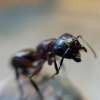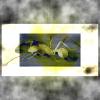- Formiculture.com
- Forums
- Gallery
- Members
- Member Map
- Chat

The catalyst that got your 'stubborn' colony thriving
Started By
Canadant
, May 2 2020 4:01 PM
5 replies to this topic
#1
 Offline
-
Posted May 2 2020 - 4:01 PM
Offline
-
Posted May 2 2020 - 4:01 PM
I have about 5 ant species in my care right now.
Tetramorium immigrans
Formica neorudibarbis
Camponotus novaeboracensis
Camponotus Pennsylvanicus
Crematogastor sp.
It takes patience to raise ants. You'll quickly learn ants know best in this hobby. But I made this thread so that some of us might share that one thing you did/modify/create/feed/alter etc that took one of your colonies from Sunday drive to LA Rush hour.
It's not that I'm struggling with my camponotus novaeboracensis but they just need that extra something to get them going again. They're very picky eaters (not even fruit flies really). They like crickets the most. But don't care for a lot. Some apple and egg here and there. I bough a heat cable that the like and just modified their outworld to look a little more natural. You can see it in my journal. My goal this year was to vary the diet of my ants more so they produce more. Good so far but are there things I'm missing?
I tried nurbs bloodworm soup and my cremas go nuts for it. Fruit flies have been a huge welcome to my other colonies.
Just wondering if there ever was something you tried and got a huge response from your ants from it.
I'm thinking things like:
humidity (which can be hard to judge sometimes.
Food
Formicarium
Outworlds and their design
Tubing
Heat
Light
And anything else you can think of.
Just wondering and generating discussion.
Sincerely
Candant
Tetramorium immigrans
Formica neorudibarbis
Camponotus novaeboracensis
Camponotus Pennsylvanicus
Crematogastor sp.
It takes patience to raise ants. You'll quickly learn ants know best in this hobby. But I made this thread so that some of us might share that one thing you did/modify/create/feed/alter etc that took one of your colonies from Sunday drive to LA Rush hour.
It's not that I'm struggling with my camponotus novaeboracensis but they just need that extra something to get them going again. They're very picky eaters (not even fruit flies really). They like crickets the most. But don't care for a lot. Some apple and egg here and there. I bough a heat cable that the like and just modified their outworld to look a little more natural. You can see it in my journal. My goal this year was to vary the diet of my ants more so they produce more. Good so far but are there things I'm missing?
I tried nurbs bloodworm soup and my cremas go nuts for it. Fruit flies have been a huge welcome to my other colonies.
Just wondering if there ever was something you tried and got a huge response from your ants from it.
I'm thinking things like:
humidity (which can be hard to judge sometimes.
Food
Formicarium
Outworlds and their design
Tubing
Heat
Light
And anything else you can think of.
Just wondering and generating discussion.
Sincerely
Candant
- AntsMaryland and OhNoNotAgain like this
"You don't get what you want. You get what you deserve".
#2
 Offline
-
Posted May 2 2020 - 4:24 PM
Offline
-
Posted May 2 2020 - 4:24 PM
My Pogonomyrmex occidentalis queen struggled during founding - she went from a clutch of like 10 eggs down to a single larva. Turned out, the air bubble in the water reservoir of her tube, because it was sitting right beside the cotton, was reducing the amount of water that wicked through the cotton and thus the humidity in her tube, which I've been told is essential for Pogonomyrmex brood growth. Moved her and her larva into a new tube with a bubble-less reservoir, and low and behold a month later she's got probably a dozen workers just like that. Colony's still thriving to this day, they're in a mini-hearth as of right now and it seems that they really like it.
- CheetoLord02, OhNoNotAgain and Acshaw89 like this
#3
 Offline
-
Posted May 2 2020 - 6:14 PM
Offline
-
Posted May 2 2020 - 6:14 PM
For some of my colonies, heat or the sudden lack of it were real kickers.
I will say heat really really seems to help most colonies (most colonies I have are sourced from Southern California). I turned it off too abruptly for the winter, and one or two colonies crashed. Another colony ate their brood. Another colony that was having trouble lost the few eggs it had and never recovered.
The colony that ate their brood (C. fragilis) now has a nice pile of cocooned workers again (they are heated again).
I have the seedling mats set to 90F but there's an air gap between mat and formicaria and the C. fragilis, who have the largest vertical gradient, stay pretty much as close to the bottom (heat) as they can.
I know some people advocate not "cooking" their ants, but I think it can make a huge positive difference.
I have learned to ramp the heat up/down in phases. I raised the temp by 5 degrees F every few days last time.
Formiculture Journals::
Veromessor pergandei, andrei; Novomessor cockerelli
Camponotus fragilis; also separate journal: Camponotus sansabeanus, vicinus, quercicola
Liometopum occidentale; Prenolepis imparis; Myrmecocystus mexicanus
Pogonomyrmex subnitidus and previously californicus
Tetramorium sp.
Termites: Zootermopsis angusticollis
Isopods: A. gestroi, granulatum, kluugi, maculatum, vulgare; C. murina; P. hoffmannseggi, P. haasi, P. ornatus; V. parvus
Spoods: Phidippus sp.
#4
 Offline
-
Posted May 2 2020 - 6:18 PM
Offline
-
Posted May 2 2020 - 6:18 PM
The other thing is trying to find a protein food the ants will eat, or which you can teach them is food.
Teaching a colony that something they think is trash is actually pretty hard as far as I can tell. I managed it with C. fragilis and fruit flies (read my journal for details), but that only worked because they had enough workers that a few of them figured it out. I've tried it with C. salsabeanus and with only a few workers, they still don't seem to get it. If I can't find something they can eat and which I can put in the nest for them (since they suck at foraging in the outworld) they may be in tons of trouble.
Formiculture Journals::
Veromessor pergandei, andrei; Novomessor cockerelli
Camponotus fragilis; also separate journal: Camponotus sansabeanus, vicinus, quercicola
Liometopum occidentale; Prenolepis imparis; Myrmecocystus mexicanus
Pogonomyrmex subnitidus and previously californicus
Tetramorium sp.
Termites: Zootermopsis angusticollis
Isopods: A. gestroi, granulatum, kluugi, maculatum, vulgare; C. murina; P. hoffmannseggi, P. haasi, P. ornatus; V. parvus
Spoods: Phidippus sp.
#5
 Offline
-
Posted May 3 2020 - 3:05 AM
Offline
-
Posted May 3 2020 - 3:05 AM
Awesome. Thanks.
"You don't get what you want. You get what you deserve".
#6
 Offline
-
Posted May 3 2020 - 8:19 AM
Offline
-
Posted May 3 2020 - 8:19 AM
Turned out, the air bubble in the water reservoir of her tube, because it was sitting right beside the cotton, was reducing the amount of water that wicked through the cotton and thus the humidity in her tube, which I've been told is essential for Pogonomyrmex brood growth.
that's really interesting information. Thanks for sharing that.
“If an ant carries an object a hundred times its weight, you can carry burdens many times your size.” ― Matshona Dhliwayo
My Journals:
1 user(s) are reading this topic
0 members, 1 guests, 0 anonymous users















